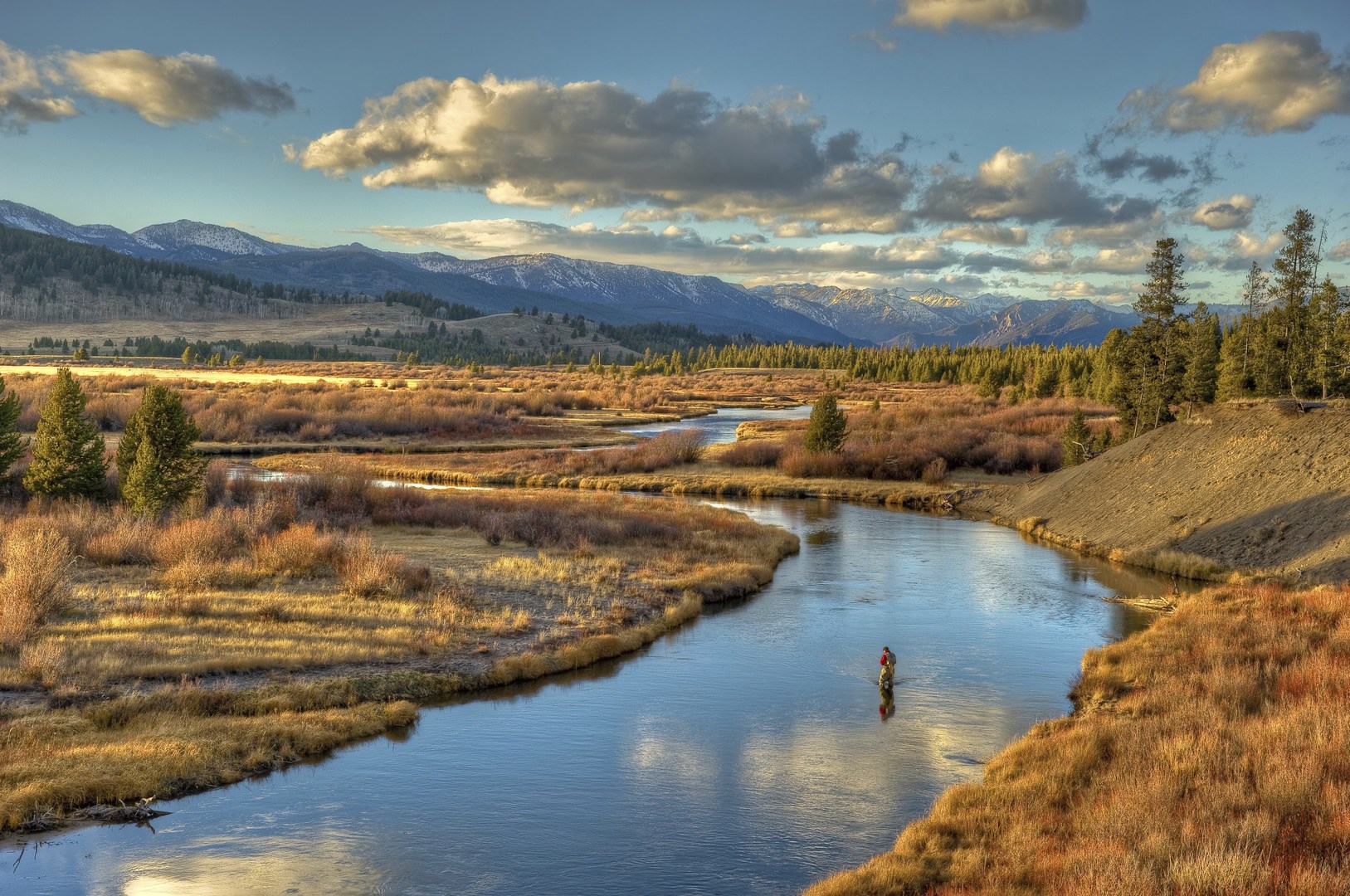Fall is a magical time to visit West Yellowstone and Yellowstone National Park. The autumn season offers visitors tranquil and oftentimes intimate nature experiences that can be tougher to find during peak summer months. Fall brings a crispness to the air and colder temps to be sure, but it also brings lighter crowds, an active wildlife season and a chance to see the park under a dusting of dazzling snow. Whether your interests are in taking in spectacular fall foliage, wildlife viewing, hiking, or the many blue ribbon trout streams around West Yellowstone– you are bound to have a memorable autumn adventure here. Here are five reasons to experience West Yellowstone this season, your gateway to fall in Yellowstone National Park.
1. Lighter crowds
The transition from summer to fall is noted in part by strikingly less crowds and road traffic, which equates to an all-around easier Yellowstone experience. From camping availability to your own private wildlife viewing sessions, take advantage of the light crowds and enjoy the best of West Yellowstone and Yellowstone National Park with elbow room to spare.
2. Fall foliage
Expect golds, bright oranges, and fiery reds to begin showing above 7,000 feet in mid- to late-September among the park's many aspen groves. By October, fall colors usually start to appear below 7,000 feet and are viewable from the road. In the park, Lamar Valley and Mammoth Hot Springs are your go-to spots for easily finding picturesque fall foliage.
3. Incredible wildlife viewing
The cooler temperatures of autumn signal not just changes in the flora but changes in wildlife behavior, too. Black and grizzly bears become more active, often appearing in roadside meadows preparing for their winter hibernation. The elk rut becomes a large spectacle in and around Mammoth Hot Springs, where intimidating bull elk can be seen among their harem of cow elk. Pronghorn antelope also exhibiting mating behavior; find bucks defending their claim to a doe, especially in open grassland. In November, bighorn sheep begin their rut, and Yellowstone’s iconic bison are more visible than ever along, or actually on, the roads.
4. Fly-fishing abounds
Even the fishing becomes gold-hued in West Yellowstone in the fall as big browns run up from big lakes to spawn in Yellowstone’s rivers and streams. Barn’s Hole and Baker’s Hole on the Madison River hold giant brown trout from Hebgen Lake, and West Yellowstone angler Bob Jacklin’s 10-pound “fish of a lifetime” (which can be viewed in the West Yellowstone Yellowstone National Park visitor center) was caught on a stretch of the Madison between Hebgen Lake and Quake Lake just 25 minutes from downtown West Yellowstone. The South Fork of the Madison River is even closer to town, and catching golden-sided Hebgen monsters in the smaller sections of this stream is simply thrilling. The Lewis River Channel run is as famous for its big browns as it is for the lake trout that follow them. An easy 5-mile hike from the Dogshead Trailhead will get you deep into grizzly country to chase legends in this famous section of water.
5. First Yellowstone snows
The first snow often takes visitors and locals by surprise, frequently coming early in September (even August) and leaving just as quickly. As September fades into October, snows tend to linger, dusting the sagebrush and lodgepole-filled landscape with white. The shimmer of snow falling takes on an almost magical quality in and around West Yellowstone. Be sure to head out on the park trails, where you’ll catch all of this in blissful silence. Okay, near silence...it’s possible you’ll hear elk bugling in the distance.




Comments
Sign In and share them.